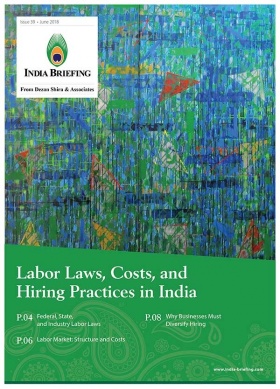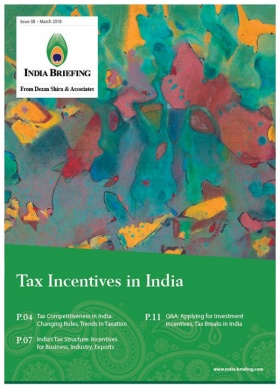GST Reforms in the Works, Businesses in India Remain Hopeful
July 1 marked the first year anniversary of India’s indirect tax overhaul with the launch of the Goods and Services Tax (GST).
The reform, over 17 years in the making, replaced multiple state and federal levies.
Yet, in the past one year alone, the GST system has been tweaked and changed multiple times.
Through daily to weekly and monthly announcements, changes have been introduced to the types of returns available, the GST rates of goods and services, the input credit refund mechanisms, the composition scheme, the technology platform, and the e-way bill.
The constant improvisations to the ‘one nation, one tax’ that isn’t just one tax rate or the same final tax implemented across all states destabilized businesses and industry in India, who were already reeling from the 2016 demonetization of high-value currency.
With the teething period now proclaimed over – companies across all sectors are looking for key changes in the way GST is implemented.
The government is just as motivated to ensure greater efficiency in the way the system is administered to eliminate tax evasion.
Moreover, India will be going into a general election year in 2019, and the ruling Bharatiya Janata Party government led by Prime Minister Narendra Modi will be at pains to woo voters – the business community is a key vote base for Modi’s party.
Here we discuss some of the immediate concerns faced by businesses under the GST regime.
GST rate slabs for goods and services
India will not get a single GST rate – given huge disparities in income distribution and the government’s revenue targets. However, rationalizing this rate structure is a much anticipated reform.
Currently, there are seven rate categories. These are zero, five, 12, 18, and 28 percent for goods and services as well as 0.25 percent for precious stones and three percent for gold.
The different rates for goods and services makes the system complex to navigate for businesses, creating confusion across the supply chain.
Further, as the World Banks notes, the 28 percent rate is the highest among 115 countries that implement the GST/Value Added Tax system.
Finance Minister Arun Jaitely has hinted that items in the highest tax bracket of 28 percent may be shifted to a lower rate category.
Businesses should also pay attention to the outcomes of the forthcoming GST Council meeting on July 21, which is expected to lower the GST rate for paints, cement, marble, tiles, varnishes, and digital cameras.
Simplified filing of GST returns
Businesses now have to file returns once a month – instead of three returns every month – which was the case when the GST was rolled out last July.
It brings down the total number of returns to be filed from 36 to 12 a year.
A simplified return filing system is also in the works – where input credit will be system driven – eliminating the scope for technical glitches due to mismatch in reporting.
The government has proposed that the simplified process be achieved in three phases, each lasting six months. They are as follows:
- Phase one – The forms GSTR-3B and GSTR-1 will continue until the GSTN system is upgraded.
- Phase two – Sellers will be able to upload their invoices on the GSTN portal. Meanwhile, the buyer can continue to claim credit on the basis of self-declaration. The buyer will be notified if there are discrepancies between the claims of the two parties.
- Phase three – Provisional credit will be removed, and the buyer will claim credit according to the invoices uploaded by the seller.
Refunding exporters
The export community have been among the worst hit by the GST due to extensive delays in securing refunds or denial of refunds due to technical glitches and other reasons.
It has dried up credit in the sector, resulting in the cancellation of export orders in labor intensive sectors, such as engineering and apparel.
Last month, the tax department allowed the clearance of GST refunds based on the PAN number of exporters.
A second special refund drive also took place from May 31 to June 14, to fast-track the clearance of dues.
Much of the delays has been attributed to the mismatch in the GST identification number (GSTIN) mentioned in the shipping bill and return forms GSTR-3B and GSTR-1.
A manual facility to correct the mismatch in the invoice details in shipping bills and GST returns is available to exporters for bills dated till April 2018.
Businesses will look to see whether the changes make a difference to the refund processing mechanism.
GSTN infrastructure
The GST Network portal or GSTN provides technological support to the administration of the GST. It has unfortunately suffered from continuous glitches throughout its roll-out.
A phased transition to ease the filing process will reduce the burden on the GSTN system.
This in turn will reduce the scope for delays that can be costly for businesses missing their return deadlines.
About Us
India Briefing is produced by Dezan Shira & Associates. The firm assists foreign investors throughout Asia and maintains offices in China, Indonesia, Singapore, Vietnam, Hong Kong, and Russia.
Please contact india@dezshira.com or visit our website at www.dezshira.com.
- Previous Article Independent Director Qualifications in India
- Next Article Investing in India’s Entertainment Industry – Digital Streaming, Regional Content, Film and TV











